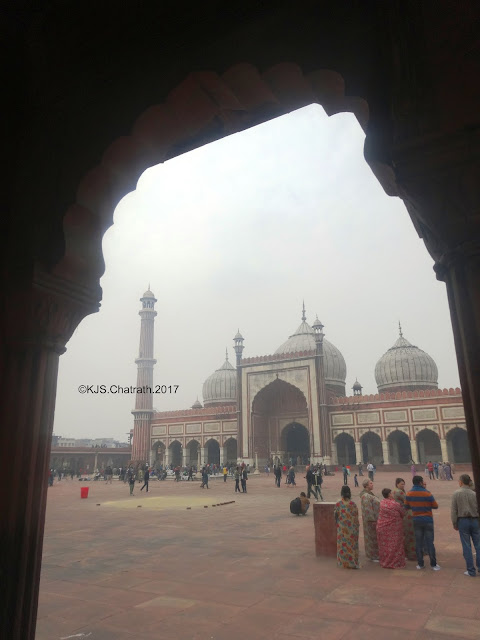On the occasion of Eid al-Adha, we share some photos of Shahi Jama Masjid Delhi, taken 3 years back.
Eid al-Adha is the last of the two islamic holidays celebertated worldwide each year. It honours the willingness of Ibrahim to sacrifice his son Ismael as an act of obedience to God's command. But before Ibrahim could sacrifice his son, God provided a lamb to sacrifice instead. It honours the willingness of Ibrahim to sacrifice his son Ismael as an act of obedience to God's command. But, before Ibrahim could sacrifice his son, God provided a lamb to sacrifice instead.
Jama Masjid, Delhi, is one of the largest mosques in India. It was built by the Mughal Emperor Shah Jahan Shah between 1650 and 1656 at a cost of one million rupees, and was inaugurated by Imam Syed Abdul Ghafoor Shah Bukhari from Bukhara, present-day Uzbekistan.
It has three great gates and two 40 metres high minarets constructed with strips of red sandstone and white marble. The courtyard can accommodate more than 25000 people. There are three domes on the terrace which are surrounded by the two minarets. On the floor, a total of 899 black borders are marked for worshippers.
Jama Masjid, Delhi, is one of the largest mosques in India. It was built by the Mughal Emperor Shah Jahan Shah between 1650 and 1656 at a cost of one million rupees, and was inaugurated by Imam Syed Abdul Ghafoor Shah Bukhari from Bukhara, present-day Uzbekistan.
It has three great gates and two 40 metres high minarets constructed with strips of red sandstone and white marble. The courtyard can accommodate more than 25000 people. There are three domes on the terrace which are surrounded by the two minarets. On the floor, a total of 899 black borders are marked for worshippers.






























